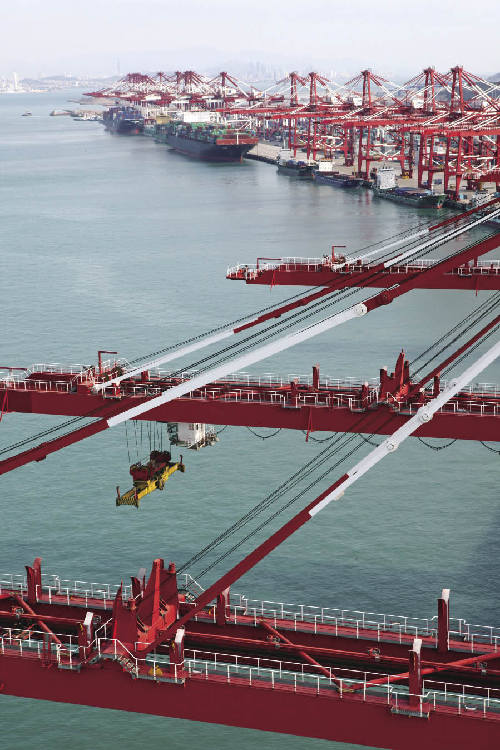Is the Chinese Economy Slowing Down?
By WANG JIANYE
 |
| A container terminal at Qingdao Port in Shandong Province. |
RECENTLY we have seen large, drastic movements in key exchange rates and commodity and asset prices. The market seems worried about continued crisis or sluggishness in developed economies. It also seems to be concerned about a significant slowdown in emerging market economies, China in particular. There has been talk in some corners about a possible “short circuit” in China’s economy. Is the Chinese economy slowing down? Is a Chinese financial crisis looming? What are the implications for our trading partners?
China's real GDP grew at 7.8 percent last year, edging down slightly to 7.7 percent in the first quarter of this year. Compared with the country's recent growth record, with an annual average of 10.6 percent in the 10 years from 2002 to 2011, growth seems to be decelerating.
The past decade, however, is very unusual and last year's single-digit growth is not unusual in the long run. Prior to the 2008-09 financial crisis, asset bubbles in the U.S. and Europe pushed global output and trade to an unsustainably high level. Following the crisis, China responded with a stimulus package to boost domestic demand that led Asia to a V-shaped rebound in 2009-2011. These two factors were temporary and no longer in play.
Other indicators suggest a more positive direction of China's economy. Overall domestic demand in China held up well in 2012 and has been resilient so far in 2013. This demand has been increasingly driven by private consumption and investment. The first four months of this year saw a pick-up in the real growth of imports excluding those related to processing trade. And as in 2012, consumption contributed to the bulk of the GDP growth in the first quarter this year, notwithstanding the government's efforts to restrain its own consumption expenditure.
On the supply side, the service sector has lately outpaced industry, buoying the labor market and helping lower the resource intensity of economic activity. These developments are indicative of a welcome change as China's industrialization and urbanization enter a new phase and the country strives for a steadier and more sustainable growth pattern.

